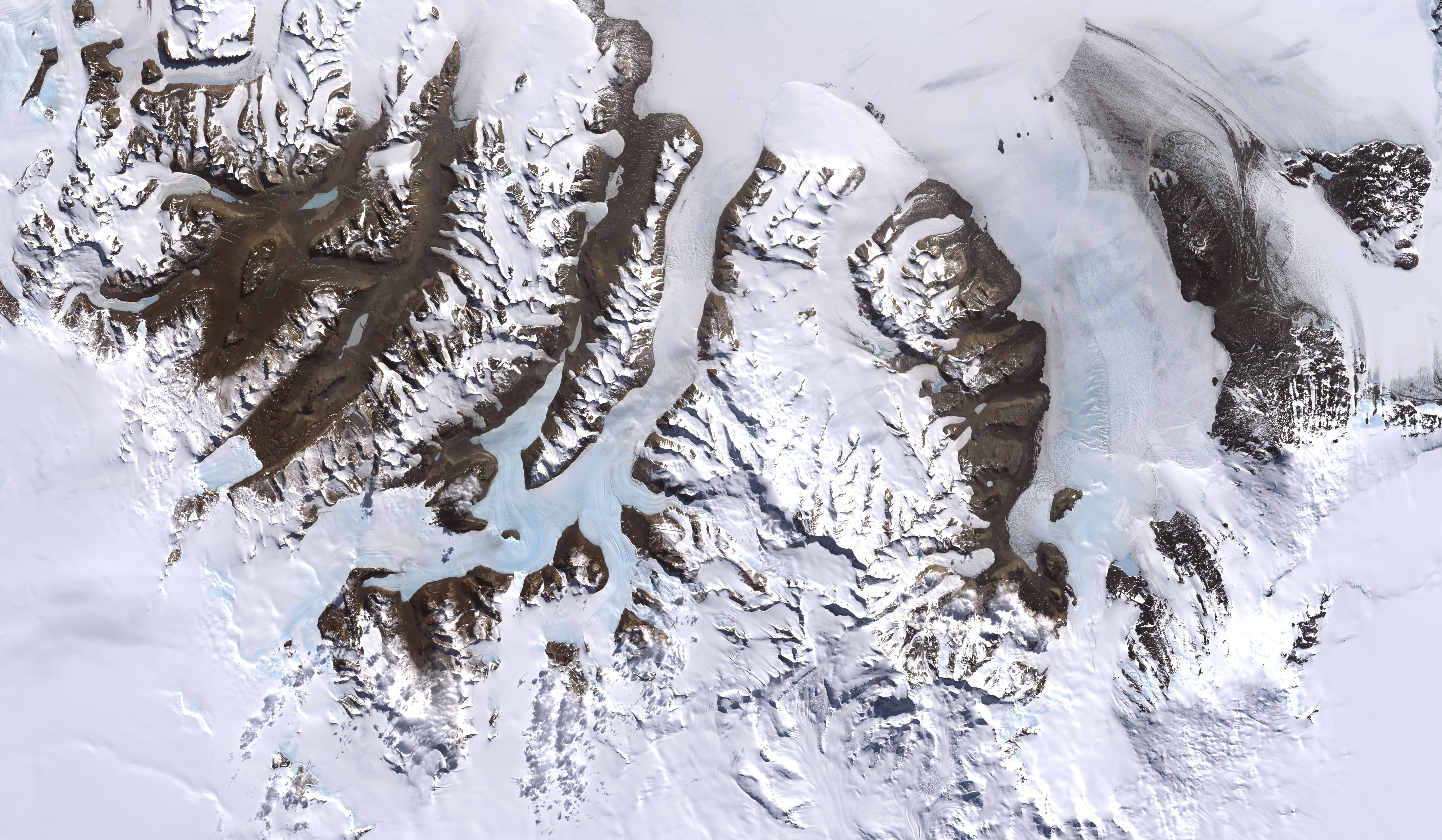Yesterday I went to Snow School. This is a camping trip where we learn survival skills to help us when we're out in the field. Antarctica is very windy and it's hard to predict when a storm might come, so we always have to be prepared to be caught in bad weather.
Our group was driven out to the
McMurdo Ice Shelf. This is an incredibly thick piece of floating ice, several hundred meters thick, that forms where the glacier breaks off from land and flows into the sea. An
ice shelf is different from sea ice, because sea ice is made of frozen seawater and melts when the temperature warms, but ice sheets are permanent because they are made of glaciers (so not salty). In the picture below, the mountains are on land. The jagged edges of the mountains show where the glacier breaks, and the flat ice is the McMurdo Ice Shelf, where we were camping.

On Antarctica, roads are marked by flags. Green and red flags show where it is safe to travel, and black flags show where there is danger (but only the danger that has been mapped! There are many dangerous areas that are not flagged). The flags in the picture above show a road on the McMurdo Ice Sheet leading to the airport. No pavement, yellow lines, or street signs here!
We were driven out on these roads by huge trucks called Delta's. The Delta's big tires can safely cross the traverse from land to ice and prevents it from falling into cracks.

At our camping site, we built our own structures to sleep in. First, we put up a special type of tent called Scott Tents, which are tall and pyramid-shaped. These are especially designed to withstand high winds (up to 80 mph). This is necessary, since Antarctica is the windiest of all the continents. We didn't want our whole camp to be blown away and be left homeless all night! So, we built a wall of snow connecting the Scott Tents. We did this by cutting squares of snow from the top of the ice shelf and stacking them into a wall (just like you do with Legos!). The Scott Tents, connected by the snow wall, will help protect the rest of the camp from the wind.

Inside the wall, we also put up regular dome tents, like what you and your family may use when you go camping. However, it's hard to anchor tents to the ground in soft snow, so we had to dig trenches into the ground to bury our tent stakes (these buried anchors are called "dead men").

We also learned to build structures out of snow, in case we get stuck out in the weather with no camping gear. We built a snow cave by piling up all of our duffle bags, then covering them in snow. The snow gets packed down with shovels, then left to sit in the sun and refreeze. After a while, you dig a tunnel to pull out all of the bags, and an open cave remains. It's sort of like an igloo, but messier.

We also dug snow trenches that you can sleep inside of. They are small (just the size of one person) and not very warm, but protected from the wind.
Overall, the first day of snow school involved a whole lot of shoveling and sawing! We camped out that evening in the structures we built, and were able to stay very warm even though the temperature outside was only about 20 degrees Fahrenheit. We spent the next day (today) learning other useful survival skills, like how to set up portable VHF radios. We were able to call and talk to people at the South Pole with those radios! We also pretended to be caught in a white-out (when it's snowing so hard you can't see or hear) by placing buckets over our heads. With our heads covered, we had to try to locate one of our team members who was pretending to be lost in the snow.
Tomorrow is our last day to prepare ourselves for our field work. Friday morning we'll leave for Taylor Valley, where we will spend the next week collecting samples for our research!



















































